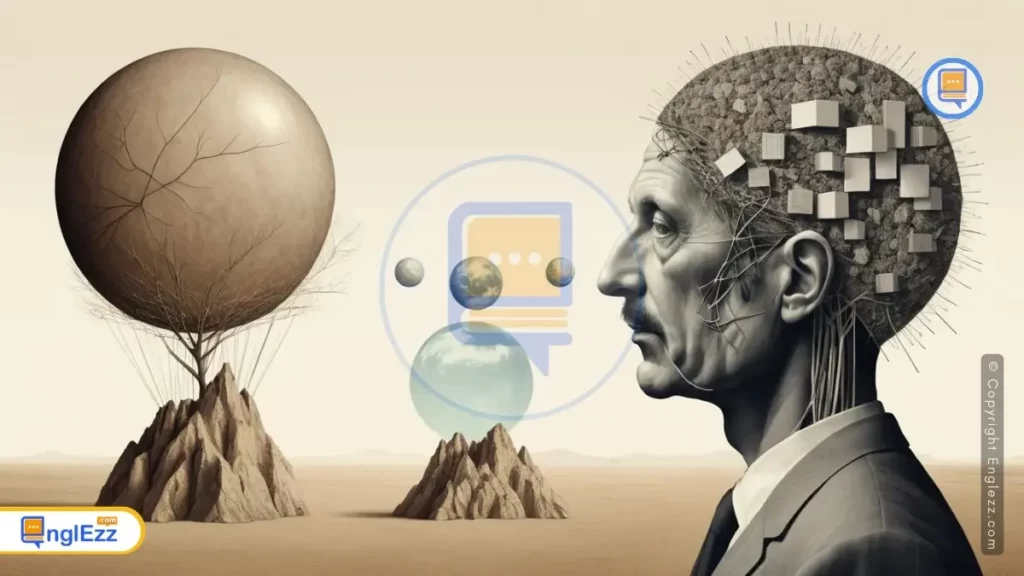Language is more than just a tool for communication; it is the very fabric that weaves our thoughts, shapes our perceptions, and influences our reality. The words we choose to express ourselves not only convey meaning but also carry the weight of cultural nuances, emotional undertones, and societal norms. From the simplest phrases we utter in our daily conversations to the profound narratives we encounter in literature, language has the remarkable ability to frame our understanding of the world around us.
Table of Contents
- The Power of Words: How Language Shapes Our Thoughts and Perceptions
- The Significance of Language in Human Experience
- The Relationship Between Language and Thought: An Overview
- The Sapir-Whorf Hypothesis: Language and Cognitive Perception
- How Vocabulary Influences Our Understanding of Concepts
- The Role of Metaphors in Shaping Our Reality
- Language, Culture, and Identity: A Deep Connection
- The Impact of Language on Emotional Expression
- How Language Can Foster Empathy and Understanding
- The Influence of Language in Media and Communication
- The Power of Positive Language in Personal Development
- Language Barriers: Challenges in Cross-Cultural Communication
- The Evolution of Language and Its Influence on Thought
- Practical Tips for Mindful Language Use
- Conclusion: Embracing the Power of Words in Daily Life
- Further Reading: Recommended Books and Resources on Language and Thought
- Conclusion
The Power of Words: How Language Shapes Our Thoughts and Perceptions
In this blog post, we will explore the profound power of words—how they create our mental landscapes, influence our beliefs, and even dictate our interactions with others.

Join us as we delve into the fascinating relationship between language and thought, uncovering the ways in which the words we speak can shape not only our individual realities but also the collective consciousness of society.
The Significance of Language in Human Experience
Language is far more than just a tool for communication; it is the very framework through which we perceive and interpret the world around us. From the moment we are born, we are immersed in a tapestry of words, phrases, and expressions that shape our thoughts, influence our emotions, and mold our identities. The significance of language in human experience cannot be overstated—it is the lens through which we view reality, the bridge that connects us to others, and the force that drives our interactions and relationships.
As we delve into the intricate relationship between language and thought, we begin to uncover how the words we choose can direct our feelings and perspectives. For example, studies in linguistic relativity suggest that the structure and vocabulary of our language can influence how we think about time, space, and even color. This means that speakers of different languages may experience the world in fundamentally different ways, influenced by the specific words and grammatical structures available to them.
Moreover, language carries cultural connotations and historical weight, embedding societal norms and values within its usage. It is through language that we share our stories, traditions, and beliefs, fostering a sense of belonging and cultural identity. The power of words extends beyond mere description; they evoke emotions, inspire action, and can even alter perceptions of reality.
In this exploration, we will unravel the profound impact language has on our cognitive processes and social interactions. From the subtleties of persuasive rhetoric to the nuances of everyday conversation, we will discover how language not only reflects our thoughts but actively shapes them, guiding us on a journey that reveals the true power of words in our lives.
The Relationship Between Language and Thought: An Overview
Language and thought are intricately intertwined, each influencing and shaping the other in profound ways. At the core of this relationship lies the Sapir-Whorf Hypothesis, which posits that the language we speak not only reflects our thoughts but also constrains and directs them. This concept suggests that the vocabulary available to us can influence how we perceive the world around us. For instance, cultures with more words for snow can interpret and describe subtle differences in snowfall that others might overlook. This linguistic diversity emphasizes how language can shape our sensory experiences and cognitive frameworks.
Moreover, the way we structure our sentences can influence our understanding of time, space, and relationships. In languages that prioritize aspects such as gender or tense, speakers may develop a heightened awareness of these elements in their daily lives. For example, speakers of languages that differentiate between past, present, and future may think about time more linearly compared to those whose languages blend these concepts more fluidly.
Additionally, language can evoke emotions and frame our narratives. The choice of words can elicit joy, sadness, anger, or empathy, guiding how we interpret experiences and interact with others. This is particularly evident in marketing, poetry, and storytelling—where the right words can inspire action, create connection, or invoke a powerful emotional response.
In essence, the relationship between language and thought is not merely academic; it is a dynamic interplay that shapes our realities and the way we engage with the world. Understanding this connection can empower us to be more mindful of our language choices, recognizing the power they hold in influencing our perceptions and interactions.
The Sapir-Whorf Hypothesis: Language and Cognitive Perception
The Sapir-Whorf Hypothesis, also known as linguistic relativity, posits that the structure and vocabulary of a language influence the way its speakers perceive and think about the world. This intriguing concept suggests that language is not merely a tool for communication but also a framework that shapes our cognitive processes and molds our understanding of reality.
Imagine a world without the words for certain colors. Research has shown that speakers of languages with fewer color terms often struggle to differentiate between similar shades, while those with richer vocabulary can effortlessly identify nuances. This phenomenon illustrates how language can restrict or enhance our cognitive abilities, impacting everything from basic perceptions to complex ideologies.

Furthermore, the Sapir-Whorf Hypothesis invites us to consider how cultural differences are embedded within language. For example, some languages emphasize collectivism and community, while others prioritize individualism. These linguistic distinctions can profoundly affect how speakers perceive concepts like identity, responsibility, and social interactions. A person who speaks a language that highlights communal relationships may view their role in society through a lens of interdependence, while a speaker of a more individualistic language might focus on personal achievements and autonomy.
In essence, the Sapir-Whorf Hypothesis serves as a compelling reminder of the powerful interplay between language and thought. It encourages us to reflect on our own linguistic choices and consider how they shape our perceptions, behaviors, and interactions. By understanding this deep connection, we can become more aware of the nuances in our communication and appreciate the rich tapestry of human experience that language enables.
How Vocabulary Influences Our Understanding of Concepts
Language is a powerful tool that not only facilitates communication but also shapes our understanding of the world around us. The vocabulary we choose to use can significantly influence how we perceive and interpret various concepts. This phenomenon is often referred to as “linguistic relativity,” which suggests that the structure and lexicon of a language can affect its speakers’ thoughts and behaviors.
Consider the way different cultures have distinct words for concepts that may not be easily translated into another language. For example, the Finnish word “sisu” encapsulates a unique blend of determination, resilience, and courage, embodying a mindset that encourages perseverance in the face of adversity. This singular term conveys an entire philosophy of strength that might require an elaborate explanation in English. Consequently, speakers of Finnish may approach challenges with a mindset shaped by this powerful notion, highlighting how vocabulary can influence behavior and emotional responses.
Furthermore, research has shown that the richness of one’s vocabulary can impact cognitive abilities and problem-solving skills. A person with a more extensive vocabulary may be better equipped to articulate complex ideas and engage in nuanced discussions. This proficiency allows for a deeper understanding of intricate concepts, fostering critical thinking and creativity. For instance, a student who learns the terminology associated with environmental issues may develop a stronger appreciation for sustainability and ecological responsibility.
In everyday interactions, the words we choose can also frame our perceptions of people and situations. Describing someone as “assertive” versus “aggressive” can lead to significantly different interpretations of that person’s behavior. This subtlety can shape our opinions, influence our relationships, and even affect our decision-making processes. By being mindful of the vocabulary we use, we can create a more inclusive and empathetic dialogue, encouraging understanding rather than division.
Ultimately, the power of words lies in their ability to shape our thoughts and perceptions in profound ways. By expanding our vocabulary and being intentional about our language choices, we can enhance our understanding of the world and foster more meaningful connections with those around us. In this ever-evolving landscape of communication, recognizing the influence of vocabulary is essential for personal growth and societal progress.
The Role of Metaphors in Shaping Our Reality
Metaphors are not just literary devices; they are powerful tools that shape our understanding and perception of the world around us. By drawing comparisons between seemingly unrelated concepts, metaphors allow us to navigate complex ideas and feelings with greater ease. For instance, when we describe time as “money,” we begin to perceive it as a valuable resource that can be spent, saved, or wasted. This metaphor not only influences how we manage our schedules but also frames our emotional responses to time constraints and deadlines.
Consider the metaphor of “life as a journey.” This perspective encourages us to view our experiences as part of a larger path filled with challenges, detours, and growth opportunities. It invites us to reflect on our choices and learn from our experiences, fostering resilience and a sense of purpose. In contrast, if we were to conceptualize life merely as a series of events, we might become overwhelmed by the chaos and lose sight of the meaningful connections that define our existence.
Moreover, metaphors play a crucial role in shaping societal narratives and cultural attitudes. For example, language surrounding mental health often employs metaphors of warfare, referring to “battling depression” or “fighting anxiety.” While these expressions can empower individuals to confront their challenges, they can also perpetuate the stigma around mental illness by framing it as a personal failure rather than a health issue.
In essence, metaphors influence not only our individual thoughts and emotions but also the collective mindset of society. By recognizing the metaphors we use, we can cultivate a more intentional and positive language that shapes a reality rooted in empathy, understanding, and growth. As we navigate our lives, let us be mindful of the metaphors we embrace, for they have the power to transform our perceptions and, ultimately, our reality.
Language, Culture, and Identity: A Deep Connection
Language, culture, and identity are intricately intertwined, forming a triad that shapes how we perceive the world and ourselves. At its core, language is more than just a means of communication; it is a vessel of culture, carrying the nuances, traditions, and histories of the people who speak it. When we engage with a specific language, we don’t just learn words and grammar; we immerse ourselves in a rich tapestry of cultural narratives and identity.
Consider the way specific words encapsulate ideas that may not have direct translations in other languages. For instance, the German term “Fernweh,” which translates to a longing for distant places, evokes a sense of nostalgia and wanderlust that goes beyond mere travel. Similarly, the Japanese concept of “Ikigai” represents a deeper understanding of one’s purpose and fulfillment in life, highlighting values that may not be universally expressed. These unique expressions reveal how language can reflect the priorities and philosophies of a culture, shaping the identities of those who embrace them.
Moreover, speaking a particular language often fosters a sense of belonging. It connects individuals to their heritage and communities, reinforcing cultural ties that might otherwise fade in an increasingly globalized world. Bilingualism, for instance, allows individuals to navigate multiple cultural landscapes, enriching their personal and social identities while also granting them access to diverse ways of thinking and interacting.
In today’s multicultural society, the power of language to shape thoughts and perceptions becomes even more pronounced. As we engage in conversations across linguistic and cultural boundaries, we find that our understanding of each other deepens, revealing shared values and unique perspectives. This deep connection reminds us that language is not just a tool for communication; it is a bridge that fosters empathy, respect, and appreciation for the rich mosaic of human experience.
By recognizing the profound relationship between language, culture, and identity, we can better appreciate the power of words in shaping our world and our place within it.
The Impact of Language on Emotional Expression
Language is not merely a tool for communication; it profoundly influences how we express and experience our emotions. The words we choose can either amplify or diminish our feelings, shaping not only our own emotional landscape but also how others perceive us. For instance, using vivid, descriptive language can evoke intense emotions, transporting the listener or reader into the depths of our experiences. Phrases like “heartbroken” or “overjoyed” carry weight, painting a picture that resonates deeply with others.
The words we use can evoke different emotions and attitudes. Opt for positive, empowering language that uplifts both yourself and those around you. Instead of saying, “I can’t do this,” try reframing it to, “I’m learning how to do this.” This shift not only influences your mindset but can also inspire others.
Additionally, cultural variations in language play a vital role in emotional expression. Some languages have unique words to describe specific emotions that may not have direct translations in others. For example, the German word “Schadenfreude” refers to the pleasure derived from someone else’s misfortune, capturing a complex emotional response that might require several sentences to explain in English. This linguistic richness allows speakers to articulate nuances in their feelings, fostering a deeper understanding of their emotional states.
Moreover, our emotional responses can be influenced by the language we use to describe our feelings. Research shows that individuals who describe their emotions in a more detached manner—using less emotionally charged language—often experience those emotions less intensely. On the other hand, those who embrace vivid and expressive vocabulary may find themselves more in tune with their feelings, allowing for deeper introspection and emotional clarity.
In everyday life, the impact of language on emotional expression can be observed in the way we communicate with friends, family, and colleagues. A simple choice between saying “I feel sad” versus “I feel devastated” can change the tone of a conversation and alter the level of empathy we receive. By consciously choosing our words, we can cultivate more meaningful connections and foster an environment where emotions are acknowledged and validated.
Ultimately, understanding the power of language in shaping our emotional expression not only enhances personal communication but also encourages us to be more mindful of the words we use. By harnessing this power, we can articulate our feelings with greater precision, connect with others on a deeper level, and ultimately enrich our emotional lives.
How Language Can Foster Empathy and Understanding
Language is not just a tool for communication; it is a bridge that connects us to others, enabling empathy and understanding. The words we choose to express ourselves can have a profound impact on our relationships and interactions. When we engage in thoughtful dialogue, we open the door to shared experiences and emotions, allowing us to step into someone else’s shoes.
For instance, using inclusive language fosters a sense of belonging, making individuals feel valued and understood. Phrases that acknowledge diverse perspectives invite openness and encourage others to share their stories, creating a richer tapestry of understanding. When we communicate with kindness and respect, we not only validate others’ feelings but also promote a culture of empathy.
Moreover, storytelling is a powerful aspect of language that deepens connections. When we share personal anecdotes or listen to the narratives of others, we can tap into universal emotions, bridging gaps that may otherwise divide us. The power of a well-told story can evoke compassion and inspire action, prompting us to reflect on our beliefs and biases.
Ambiguity can lead to misunderstandings and confusion. Practice clarity in your communication by being direct and straightforward. This not only aids in effective dialogue but also demonstrates respect for your listeners’ time and comprehension.
In contrast, language can also create barriers. Words that are dismissive or derogatory can alienate and divide, reinforcing stereotypes and perpetuating misunderstandings. Therefore, it’s crucial to be mindful of the language we use and to strive for clarity and sensitivity in our communications.
Ultimately, language holds the potential to shape our thoughts and perceptions in ways that can either unite or divide. By choosing our words carefully and engaging in open, empathetic dialogue, we can foster an environment where understanding flourishes, paving the way for deeper connections and a more compassionate world.
The Influence of Language in Media and Communication
Language serves as the backbone of media and communication, wielding significant power in shaping public perception and influencing societal norms. From the headlines that capture our attention to the carefully crafted messages in advertisements, the choice of words can evoke emotions, persuade opinions, and even drive action.
In today’s fast-paced digital landscape, where information is consumed in milliseconds, the language employed by media outlets can determine the narrative around critical events. Consider how a single word can shift the tone of a news story: describing a protest as a “demonstration” rather than a “riot” can frame the public’s understanding in vastly different ways. Such linguistic nuances not only reflect but also shape societal attitudes, influencing how we perceive issues like race, gender, and politics.
Moreover, the language of social media amplifies this effect. Platforms like Twitter and Instagram rely heavily on concise messaging, where hashtags and trending phrases can create movements overnight. The power of these words is evident in campaigns that have sparked worldwide movements, illustrating how language can mobilize communities and foster a sense of solidarity.
In communication, whether it’s in marketing or interpersonal interactions, the impact of language is just as profound. The words chosen in a marketing campaign can compel a consumer to engage with a brand or turn them away. Similarly, in personal relationships, the way we articulate our thoughts and feelings can either build bridges or create barriers. A simple apology can heal wounds, while harsh criticism can drive a wedge between friends and family.
Recognizing the influence of language in media and communication allows us to become more discerning consumers of information. It encourages us to question the narratives presented to us and to appreciate the artistry of language in both its written and spoken forms. By understanding the power of words, we can not only enhance our communication skills but also become more mindful of the messages we share, ensuring that the language we use contributes positively to our collective understanding and connection.
The Power of Positive Language in Personal Development
In the realm of personal development, the words we choose to use can profoundly influence our mindset, behaviors, and overall outlook on life. Positive language acts as a powerful catalyst for growth, empowering individuals to shift their perceptions and embrace their potential. When we speak kindly to ourselves, we nurture a constructive inner dialogue that fosters self-esteem and resilience.
- For instance, instead of declaring “I can’t do this,” reframing it to “I will learn how to do this” transforms a limiting belief into an empowering challenge. This subtle yet significant shift sets the tone for our actions, encouraging us to approach obstacles with a sense of optimism and determination.
Additionally, the impact of positive language extends beyond self-talk; it permeates our interactions with others. By uplifting those around us with encouraging words and constructive feedback, we create an environment ripe for collaboration and support. This fosters a community where individuals feel valued and motivated to pursue their aspirations.
Mindful language isn’t just about speaking; it’s also about listening. Engage in active listening by giving your full attention, acknowledging what the other person says, and responding thoughtfully. This builds a stronger connection and fosters a more open dialogue.
Moreover, research shows that language can even influence our emotional state. Phrases that evoke positivity can trigger the release of neurotransmitters like dopamine and serotonin, enhancing our mood and well-being.
Incorporating positive language into our daily lives—whether through affirmations, gratitude expressions, or supportive conversations—cultivates a mindset geared towards growth and fulfillment. Embrace the power of words, and watch as they transform not only your perception of yourself but also the world around you.
Language Barriers: Challenges in Cross-Cultural Communication
Language barriers can present significant challenges in cross-cultural communication, often leading to misunderstandings and misinterpretations that can hinder relationships and collaboration. When individuals from different linguistic backgrounds interact, the subtleties of language become crucial. Words carry not only definitions but also cultural nuances that can be easily lost in translation.
Imagine a business meeting where one party speaks in a language that the other party struggles to understand. Even simple phrases can take on different meanings depending on cultural contexts. For instance, a seemingly benign expression of agreement in one culture may be perceived as indifference in another, creating friction instead of fostering cooperation. Additionally, idioms and colloquialisms often do not translate well, leading to confusion and miscommunication.
Moreover, language barriers can create feelings of isolation and frustration for individuals who are not fluent in the dominant language of a conversation. This disconnection can stifle participation and lead to a lack of confidence, preventing valuable insights from surfacing. In a globalized world, where collaboration across borders is increasingly common, recognizing and addressing these barriers is essential.
Organizations can implement strategies such as employing interpreters, providing language training, or utilizing translation technology to mitigate these challenges. However, it’s also vital to cultivate an environment of patience and openness, where participants feel encouraged to ask questions and seek clarification. By acknowledging and addressing language barriers, we can enhance our cross-cultural communication, fostering deeper connections and understanding in an increasingly diverse world.
The Evolution of Language and Its Influence on Thought
Language is not a static entity; it is a living, breathing construct that evolves alongside society, culture, and technology. The words we use today are the product of centuries of transformation, shaped by historical events, social movements, and innovations that have altered the fabric of communication. This evolution is not merely a matter of vocabulary expansion or grammatical shifts; it profoundly influences how we think and perceive the world around us.
While technical language may be appropriate in specific contexts, using jargon or slang can alienate those who may not understand it. Aim to communicate in a way that is accessible to everyone in the conversation, ensuring that your message is clear and inclusive.
Consider the feelings and perspectives of others when choosing your words. Language that reflects empathy—such as “I understand how you feel” or “That sounds challenging”—can create a more supportive environment and strengthen relationships.
Consider the way new terms emerge to articulate concepts that previously lacked names. For instance, the rise of the digital age has introduced words like “selfie,” “hashtag,” and “influencer” into our lexicon. These terms not only describe new phenomena but also shape our understanding of identity and community in a rapidly changing landscape. As language evolves, it encapsulates the zeitgeist, reflecting our values, fears, and aspirations.
Moreover, the relationship between language and thought can be seen in the concept of linguistic relativity, often summarized by the phrase “the Sapir-Whorf hypothesis.” This theory posits that the structure and vocabulary of our language can influence our cognitive processes.
- For example, speakers of languages that include specific terms for various shades of blue may perceive those colors differently than speakers of languages that do not.
This suggests that language not only conveys meaning but also shapes our mental frameworks and the way we categorize our experiences.
The evolution of language also plays a critical role in social dynamics. As language has adapted to be more inclusive, new words and phrases have emerged to challenge stereotypes and promote equality. Terms like “Latinx” and “they/them” have gained popularity as society strives for greater representation and recognition of diverse identities. In this way, language becomes a tool for social change, influencing how we think about race, gender, and identity.
In summary, the evolution of language is a powerful force that shapes our thoughts and perceptions. It reflects our changing realities, challenges our understanding of the world, and fosters social progress. By recognizing and embracing this dynamic relationship between language and thought, we can better appreciate the profound impact words have on our lives and the world around us.
Practical Tips for Mindful Language Use
Language is a powerful tool that shapes our understanding of the world and influences our interactions with others. Being mindful of the words we choose can significantly impact our thoughts, perceptions, and even our relationships. Here are some practical tips for using language more mindfully:
In moments of heated discussion or disagreement, take a moment to pause and reflect before responding. This can prevent impulsive reactions and help you articulate your thoughts more thoughtfully, maintaining a respectful conversation.
To enhance your mindfulness around language, consider keeping a journal where you reflect on your daily conversations and the language you used. Note any patterns, areas for improvement, or moments when your words positively impacted yourself or others.
By incorporating these practical tips into your daily interactions, you can harness the power of language to foster deeper connections, promote understanding, and cultivate a more positive environment in both your personal and professional life. Remember, the words you choose can create ripples of change, influencing not only your own thoughts and perceptions but also those of the people around you.
Conclusion: Embracing the Power of Words in Daily Life
In conclusion, the power of words is an undeniable force that shapes not only our thoughts and perceptions but also our interactions with the world around us. Language is more than just a tool for communication; it is a lens through which we interpret our experiences and connect with others. By consciously embracing the words we choose in our daily lives, we can foster more meaningful conversations, cultivate positive relationships, and influence our own mindsets.
As we navigate the complexities of life, let us be mindful of the language we use, both in our internal dialogues and in our external communications. Words have the ability to uplift or diminish, to inspire change or perpetuate negativity. By selecting words that reflect our values and aspirations, we can create a ripple effect that extends beyond our immediate surroundings, encouraging others to do the same.
In this digital age, where communication often occurs through screens and distances, it is essential to remember that behind every word lies a human experience. Let’s strive to be intentional with our language, using it as a tool for empathy, understanding, and connection. Whether through spoken conversations, written expressions, or social media interactions, we hold the power to shape the narrative of our lives and the lives of those around us.
So, as you move forward from this exploration of language and its profound impact, take a moment to reflect on the words you encounter each day. Embrace the power of words as a catalyst for personal growth and as a means to foster a more compassionate and connected world. Your words matter—make them count.
Further Reading: Recommended Books and Resources on Language and Thought
Expanding your understanding of how language influences thought and perception can be a transformative journey, one that opens doors to new ways of thinking and communicating. To delve deeper into this fascinating intersection, we’ve curated a selection of recommended books and resources that illuminate the power of words in shaping our realities.
The Language Instinct” by Steven Pinker
This groundbreaking work argues that the ability to use language is an innate human trait. Pinker’s engaging prose explores how language is not just a tool for communication, but also a window into the complexities of human thought.
Metaphors We Live By” by George Lakoff and Mark Johnson
This influential book examines how metaphor shapes our understanding of the world. Lakoff and Johnson reveal that our conceptual system is largely metaphorical, influencing everything from our thoughts to our actions.
How Language Shapes Thought” by Lera Boroditsky
In this collection of essays, Boroditsky, a cognitive scientist, investigates the profound ways language can alter our perception and cognition. Her research highlights how different languages can lead to different worldviews and cognitive patterns.
Words Can Change Your Brain by Andrew Newberg and Mark Robert Waldman
This insightful resource explores the neuroscience behind language and its impact on our cognitive functions. The authors provide practical strategies for using positive language to enhance brain function and foster better relationships.
Online Courses and Lectures
Platforms like Coursera and edX offer courses on linguistics, cognitive science, and psychology that delve into the relationship between language and thought. These courses can provide a more structured approach to learning about the topic.
Podcasts
Consider tuning into podcasts such as “The Linguisticator” or “Lingthusiasm,” where experts discuss various aspects of language and its cognitive implications in an engaging, accessible format.
By immersing yourself in these resources, you can gain a deeper appreciation for the intricate ways in which language shapes not only our thoughts but also our perceptions of the world around us. Whether you’re a student, a professional, or simply a curious mind, these works will inspire you to reflect on the profound power of words in our lives. Happy reading!
Conclusion
In conclusion, the power of words is undeniably profound, influencing not only our thoughts but also our perceptions and interactions with the world around us. As we’ve explored in this post, language is much more than a mere communication tool; it molds our reality, colors our emotions, and shapes our identities. By being mindful of the words we choose, we can foster a more positive mindset, cultivate empathy, and enhance our connections with others.
As you move forward, consider the impact of your language – both spoken and written – and embrace the opportunity to harness its transformative power. The next time you engage in conversation or reflect on your thoughts, remember that every word holds the potential to create change, inspire growth, and illuminate understanding.
Thank you for joining us on this journey into the intricate relationship between language and perception; we hope it inspires you to choose your words with intention and purpose.








